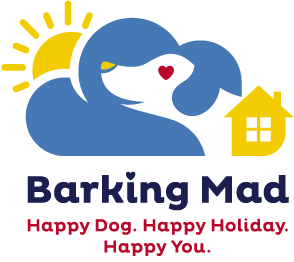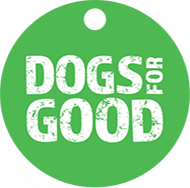Have you ever wondered how a treat or a titbit from your plate can effect your dog’s waistline? A recent report in the US highlights the issue and addresses how we as dog owners can be more responsible to keep our best friends fit and healthy.
Marge Chandler has compiled the report for the US pet supplies store PetCo, for the full report click here. Offering a dog or cat a treat is rewarding for both people and their pets. The pet usually responds to a palatable treat with enthusiasm, which people interpret as affection. But as caretakers to our dogs and cats, we also have a responsibility to keep pets healthy—and too many treats may lead to an unhealthy amount of body fat. A substantial body of veterinary literature documents that obesity in dogs and cats increases the risk of a number of health problems, including arthritis and other joint diseases, diabetes mellitus, heart and lung disease, urinary disorders, reproductive disorders, cancer, skin disease and surgical and anaesthetic complications. Additionally, research shows overweight dogs have a decreased quality of life, less vitality and shorter lives than their leaner counterparts.
Treats and the Human-Animal Bond
There is a possible link between pet obesity and the human-animal bond. Some people may use food as a form of communication and interaction with their pets. Obese dogs are more often present when their caretaker prepares or eats their own meals—at which point the human may share bits of his or her food. And studies show people with obese dogs tend to interpret their pet’s every need as a request for food.
Treats are often a reward for completing a training exercise and are typically the best motivator for positive change—although many pets can transition to clicker training to decrease treating. Small-sized, low-calorie treats are a good choice for training, so people don’t have to worry about giving too much in a short period of time. Further, most pets are more aware that they’re getting a treat than they are of the size of it, so smaller treats still get the job done. This is also true for treats given as part of a routine, like before bed or after a morning walk. Transitioning to smaller bits or lower-calorie treats is a better option than suddenly stopping a treating routine completely. Intermittent rewarding, on the other hand, can reinforce undesirable habits. For instance, if a person resists treat giving and then sometimes gives one when a pet begs, the begging behaviour can be intensified because the cat or dog thinks they’ll get something out of it.
Veterinary nutritionists estimate the calories a pet needs depending on its ideal weight, however, each pet has individual energy needs (even in pets that are the same size). One good way to see if your pet is over or underweight is to reference a body condition chart. Your veterinarian can help you learn how to use one. It is also a good idea to record your pet’s weight regularly and monitor any upward or downward trends.
But remember, the amount of food recommended on pet food labels does not include calories from treats. If a pet eats the recommended amount of food and receives additional treats, weight gain is likely. Veterinary nutritionists recommend that no more than 10% of a pet’s calorie intake comes from treats, snacks, table food or food for medication. But with just a few treats, it’s easy to exceed 10% of the calories for an average dog or cat. Pet foods are carefully balanced to meet pets’ nutritional requirements. Supplementing with extra food may not only add unnecessary calories, but also create unbalance the diet.
We were surprised by how much much some ‘human’ foods can take up of a dog’s daily recommended daily intake (see the chart on the report)
Treat Safety
Some human foods are not tolerated by pets and can cause poisoning. These include chocolate, raisins, onions, macadamia nuts and anything containing xylitol. Corncobs and bones can cause potentially fatal esophageal or intestinal obstruction. Dairy products contain lactose, a milk sugar, which may give a dog or cat diarrhoea. Many dogs and cats can tolerate a small amount of dairy products, but if the pet has diarrhoea, it’s best to avoid dairy products.
Conclusion
Giving treats to dogs and cats is rewarding and fun, but should be done with an awareness of potential weight gain and health consequences. Only treat with safe foods and take the calorie content into account. When treats are given, the amount of pet food may need to be decreased; smaller, lower calorie treats should be selected for pets with a tendency to gain weight. Remember, giving treats doesn’t need to be the main type of interaction with a pet—positive reinforcement, petting or play can be just as rewarding.




